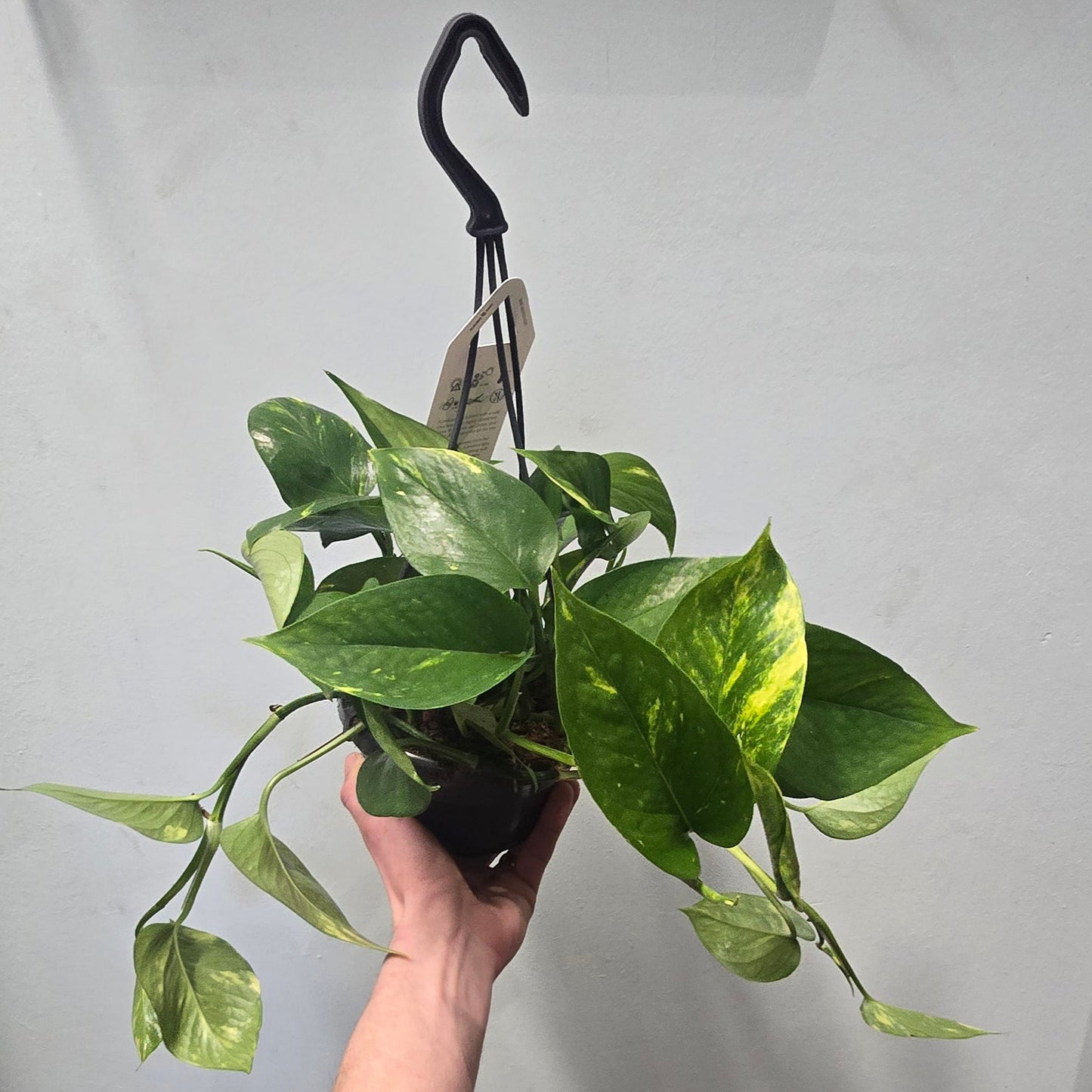Yorkshire Exotic Plants
Hanging - Devil's Ivy
Hanging - Devil's Ivy
Couldn't load pickup availability
Devil's Ivy (Pothos) Care Guide
Light:
Devil's Ivy thrives in bright, indirect light but is adaptable to lower light conditions. Avoid direct sunlight, as it can scorch the leaves and cause damage. While it will tolerate low light, growth may slow down, and the plant may lose some of its vibrant color.
Watering:
Water when the top 1-2 inches of soil feel dry. Devil’s Ivy prefers to dry out slightly between waterings rather than staying soggy. Overwatering can lead to root rot, so make sure the pot has good drainage. In the winter months, you can reduce watering frequency as the plant’s growth slows down.
Temperature:
Ideal temperatures range from 60°F to 85°F (15°C to 29°C). Avoid placing your plant near drafts, air conditioners, or heaters, as sudden temperature fluctuations can stress the plant.
Humidity:
Pothos are fairly adaptable when it comes to humidity. While they enjoy slightly humid environments, they can tolerate average indoor humidity levels. If the air in your home is particularly dry, you can increase humidity by misting the leaves or placing the plant on a humidity tray.
Soil:
Well-draining potting soil is essential. A good mix for Devil's Ivy includes peat, perlite, and pine bark to ensure good aeration and drainage. Avoid heavy, compacted soils that may retain too much moisture.
Fertilization:
Feed your Devil’s Ivy during the growing season (spring through summer) with a balanced liquid fertilizer every 4-6 weeks. During the fall and winter, reduce feeding, as the plant’s growth slows down.
Pruning:
Devil’s Ivy grows quickly and may become leggy over time. Prune back any long vines to encourage bushier growth. You can propagate the cuttings in water or soil to grow new plants.
Repotting:
Repot your Pothos every 1-2 years or when it outgrows its pot. Choose a container that's 1-2 inches larger than the current pot to allow for healthy root growth. If you notice yellowing leaves or slowed growth, it could be a sign that the plant is root-bound and needs repotting.
Common Issues:
- Yellowing Leaves: Often a sign of overwatering or poor drainage. Let the soil dry out between waterings and ensure proper drainage.
- Brown Leaf Tips: This can happen due to dry air or underwatering. Regular misting and ensuring the plant’s water needs are met can help.
- Leggy Growth: If your Pothos isn’t getting enough light, it may stretch out to search for more. Consider moving it to a brighter spot.
Fun Fact:
Pothos are known for their air-purifying qualities, helping to clean the air in your home by removing toxins like formaldehyde, benzene, and xylene.


